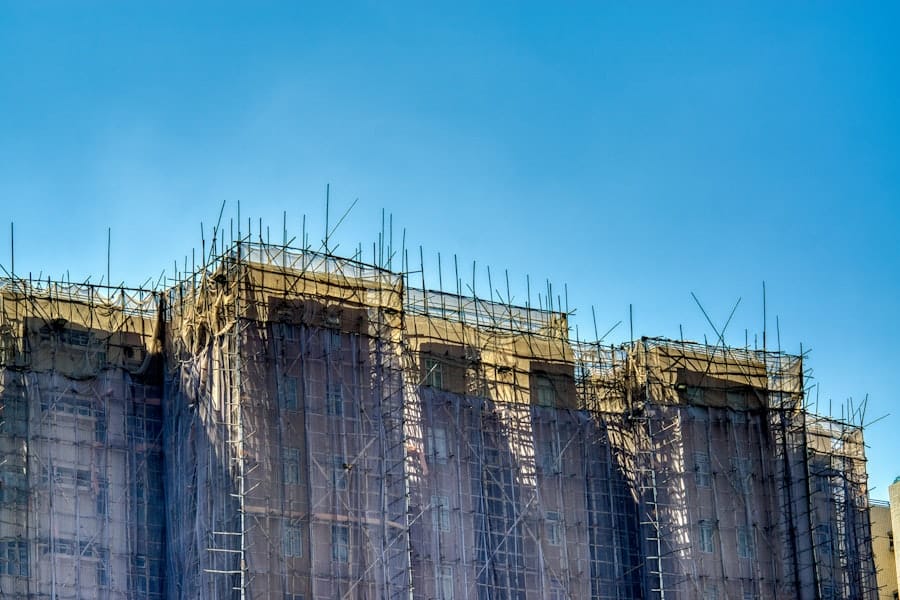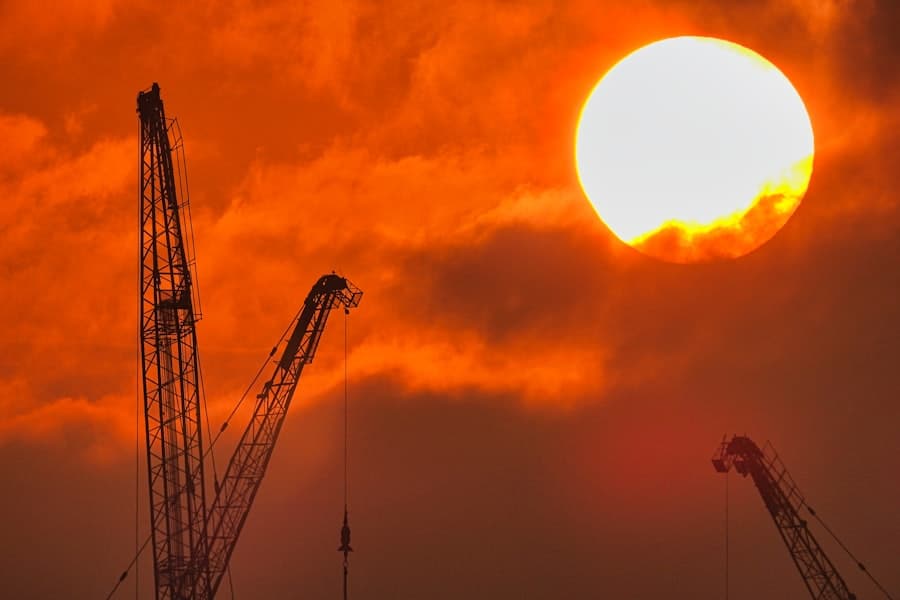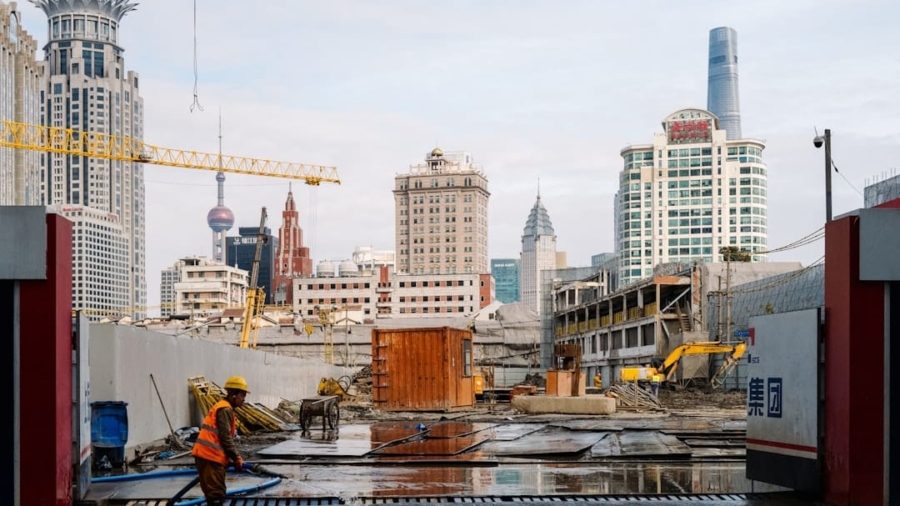The intersection of artificial intelligence (AI) and climate-resilient construction represents a transformative frontier in the built environment. As climate change intensifies, the construction industry faces unprecedented challenges, including extreme weather events, rising sea levels, and shifting environmental conditions. In response, the integration of AI technologies into construction practices is emerging as a vital strategy to enhance resilience against these climate-related threats.
By leveraging vast amounts of data and advanced algorithms, AI can provide insights that help architects, engineers, and builders design structures that not only withstand the rigors of climate change but also contribute to sustainable development. AI’s role in climate-resilient construction extends beyond mere prediction; it encompasses a holistic approach to design, resource management, and project execution. The ability to analyze complex datasets allows for more informed decision-making, enabling stakeholders to anticipate potential risks and devise strategies that mitigate them.
As the urgency for sustainable practices grows, the construction industry is increasingly turning to AI as a means to innovate and adapt, ensuring that new developments are not only functional but also environmentally responsible.
Key Takeaways
- AI plays a crucial role in climate-resilient construction by predicting and mitigating climate risks.
- AI is used to design structures that can withstand extreme weather events and changing climate conditions.
- AI helps in monitoring and managing construction projects by analyzing real-time data and making proactive decisions.
- AI optimizes resource efficiency by analyzing and optimizing energy and material usage in construction projects.
- AI enhances decision-making by providing valuable insights and recommendations for climate-resilient construction projects.
The Use of AI in Predicting Climate Risks
One of the most significant applications of AI in climate-resilient construction is its capacity to predict climate risks with remarkable accuracy. Machine learning algorithms can analyze historical weather data, satellite imagery, and environmental patterns to forecast future climate scenarios. For instance, AI models can assess the likelihood of flooding in specific regions by examining rainfall patterns, soil saturation levels, and topographical features.
This predictive capability allows construction professionals to identify high-risk areas and make informed decisions about site selection and design modifications.
These technologies can monitor environmental conditions such as temperature fluctuations, humidity levels, and wind speeds, feeding this information into AI systems that continuously refine their predictions.
For example, a construction project in a coastal area might utilize AI to analyze tidal patterns and storm surge data, enabling engineers to design structures that can withstand potential flooding events. By integrating predictive analytics into the planning phase, stakeholders can proactively address vulnerabilities and enhance the resilience of their projects.
AI in Designing Climate-Resilient Structures

The design phase of construction is critical for ensuring that buildings can withstand the impacts of climate change. AI plays a pivotal role in this process by facilitating innovative design solutions that prioritize resilience. Generative design algorithms, powered by AI, allow architects to explore a multitude of design options based on specific performance criteria.
For instance, an architect might input parameters such as energy efficiency, material sustainability, and structural integrity into an AI system, which then generates various design alternatives that meet these requirements. Additionally, AI can assist in optimizing building materials for climate resilience. By analyzing the properties of different materials under various environmental conditions, AI can recommend the most suitable options for specific projects.
For example, in regions prone to wildfires, AI might suggest fire-resistant materials or designs that minimize flammable surfaces. This data-driven approach not only enhances the durability of structures but also promotes sustainable practices by encouraging the use of locally sourced or recycled materials.
AI in Monitoring and Managing Climate-Resilient Construction Projects
Once construction projects are underway, AI continues to play a crucial role in monitoring and managing progress.
By employing machine learning algorithms to analyze this data in real-time, project managers can identify potential issues before they escalate into significant problems.
For instance, if a project is falling behind schedule due to unexpected weather conditions, AI can provide insights into how to adjust workflows or allocate resources more effectively. Furthermore, AI-driven drones and robotic systems are increasingly being utilized for site inspections and monitoring. These technologies can capture high-resolution images and data from construction sites, allowing for detailed assessments of structural integrity and compliance with design specifications.
In the context of climate resilience, this means that any deviations from planned designs—such as erosion or damage from severe weather—can be detected early on. By integrating these monitoring capabilities with predictive analytics, construction teams can implement timely interventions that enhance the overall resilience of their projects.
The Role of AI in Optimizing Resource Efficiency
Resource efficiency is a cornerstone of sustainable construction practices, and AI is instrumental in optimizing how resources are utilized throughout the construction process. By analyzing data related to material consumption, energy use, and waste generation, AI systems can identify opportunities for improvement. For example, machine learning algorithms can predict the optimal quantities of materials needed for a project based on historical data and current project specifications, reducing excess waste and minimizing costs.
In addition to material efficiency, AI can also enhance energy management during construction. Smart energy management systems powered by AI can monitor energy consumption patterns on-site and suggest adjustments to reduce usage during peak demand periods. This not only lowers operational costs but also contributes to a smaller carbon footprint for construction activities.
For instance, an AI system might recommend scheduling heavy machinery operations during off-peak hours when energy rates are lower or when renewable energy sources are more abundant.
AI in Enhancing Decision-Making for Climate-Resilient Construction

The decision-making process in construction projects is often complex and multifaceted, requiring input from various stakeholders with differing priorities. AI enhances this process by providing data-driven insights that facilitate informed choices. By aggregating data from multiple sources—such as environmental assessments, cost analyses, and risk evaluations—AI systems can present comprehensive scenarios that help stakeholders weigh their options effectively.
For example, when considering whether to invest in additional flood defenses for a new development, an AI system could analyze historical flood data alongside projected climate models to assess the potential return on investment for such measures. This capability allows decision-makers to prioritize interventions that offer the greatest benefit in terms of resilience while also considering budget constraints and long-term sustainability goals. As a result, AI not only streamlines decision-making but also fosters collaboration among stakeholders by providing a common framework for evaluating options.
Challenges and Limitations of AI in Climate-Resilient Construction
Despite its numerous advantages, the integration of AI into climate-resilient construction is not without challenges. One significant limitation is the quality and availability of data required for effective machine learning algorithms. In many regions, especially those with limited resources or infrastructure, reliable climate data may be scarce or outdated.
This lack of quality data can hinder the accuracy of predictions and analyses generated by AI systems. Moreover, there are concerns regarding the transparency and interpretability of AI algorithms. Many machine learning models operate as “black boxes,” making it difficult for stakeholders to understand how decisions are made or predictions are generated.
This opacity can lead to mistrust among project teams and clients who may be hesitant to rely on AI-driven recommendations without clear explanations of their underlying logic. Addressing these challenges requires ongoing collaboration between data scientists, engineers, and policymakers to ensure that AI tools are both effective and trustworthy.
The Future of AI in Guiding Climate-Resilient Construction Projects
Looking ahead, the future of AI in climate-resilient construction appears promising as technological advancements continue to evolve. The integration of AI with other emerging technologies—such as blockchain for supply chain transparency or augmented reality for enhanced visualization—could further enhance its capabilities in promoting resilience. For instance, blockchain technology could provide immutable records of material sourcing and usage, ensuring accountability while also facilitating more sustainable practices.
Additionally, as public awareness of climate change grows, there will likely be increased demand for buildings that meet stringent sustainability standards. This shift will drive innovation within the construction industry as companies seek to leverage AI tools to differentiate themselves in a competitive market. The potential for AI to streamline processes, reduce costs, and enhance resilience will make it an indispensable asset for future construction projects.
In conclusion, as we navigate an era marked by climate uncertainty and environmental challenges, the role of AI in guiding climate-resilient construction will only become more critical. By harnessing the power of data-driven insights and advanced analytics, stakeholders can create structures that not only withstand the impacts of climate change but also contribute positively to their surrounding environments. The journey toward sustainable construction is ongoing; however, with the continued integration of AI technologies, we are better equipped than ever to meet these challenges head-on.
In the rapidly evolving field of climate-resilient construction, artificial intelligence (AI) plays a pivotal role in enhancing the efficiency and sustainability of building projects. A related article that delves into the technological advancements supporting such initiatives is the “Top 10 Best Laptops for SolidWorks in 2023: Expert Guide with Lenovo & Dell Workstations.” This article, available at this link, explores the cutting-edge hardware that can support complex design and simulation tasks, which are crucial for implementing AI-driven solutions in construction. By leveraging powerful computing tools, engineers and architects can better model and predict environmental impacts, ensuring that new structures are both resilient and sustainable.
FAQs
What is the role of AI in guiding climate-resilient construction projects?
AI plays a crucial role in guiding climate-resilient construction projects by analyzing data to predict climate-related risks, optimizing building designs for energy efficiency, and providing real-time monitoring of construction sites for potential hazards.
How does AI help in predicting climate-related risks for construction projects?
AI uses historical climate data, satellite imagery, and predictive modeling to assess the potential impact of climate-related risks such as flooding, extreme temperatures, and storms on construction projects. This helps in identifying vulnerable areas and designing appropriate mitigation measures.
What are the benefits of using AI for climate-resilient construction projects?
Using AI for climate-resilient construction projects can lead to improved risk management, cost savings, and enhanced sustainability. It allows for more accurate risk assessments, better-informed decision-making, and the implementation of innovative design solutions to mitigate climate-related challenges.
How does AI optimize building designs for energy efficiency in climate-resilient construction projects?
AI analyzes building materials, structural components, and environmental factors to optimize designs for energy efficiency. It can recommend the use of sustainable materials, passive design strategies, and renewable energy systems to reduce the environmental impact of construction projects.
What role does AI play in real-time monitoring of construction sites for potential climate-related hazards?
AI-enabled sensors and monitoring systems can track environmental conditions, structural integrity, and safety hazards at construction sites in real time. This allows for early detection of potential climate-related hazards such as soil erosion, wind damage, or temperature fluctuations, enabling proactive risk management.

